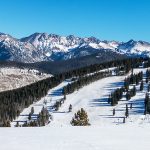Now that the winter months are upon us, runners face dropping temperatures, harsh winds and slushy running conditions. Yet, for the dedicated runner, these conditions will not hinder the daily jog. Footwear manufacturers reward these foul-weather warriors with running shoes designed specifically for challenging weather; featuring redesigned outersoles, warm linings and water-resistant uppers.
Most of the companies offering winter footwear weatherize their already popular running shoes with new winter features. The addition of water-repalling Gore-Tex on best-selling shoes may be growing in popularity, but a Mizuno representative suggested that the procedures price hinders a more wide-spread acceptance.
“Adding Gore-Tex is pretty pricey,” the Mizuno rep says. “The U.S. doesnt really have huge areas to distribute that product in the marketplace, unless youre going to the northern states where there is a considerable amount of snow.” He also says that, while companies may offer many more weatherized products internationally, cold-weather shoes have just recently begun to grow in America.
Many major companies dont even have winter-specific shoes, and Asics plans on dropping its one winter-specific shoe of two years, the GEL-Arctic WR 2, next spring.
For the companies that do produce winterized footwear, the new shoes available this season are sure to satisfy the dedicated winter runner.
Asolo has updated its Propulsion line a trail-running, fast-packing shoe with Gore-Tex lining that keeps snow and slush from touching the foot. The company also offers a Mountain Utility line winter-inspired products made for snowshoeing, trail hiking and walking during winter months; offering a combination of wool lining with warmth and comfort.
Winter running shoes are typically categorized as trail shoes because of their design for rugged elements, so Saucony teamed up with rubber expert Vibram to develop the ProGrid Xodus. “[Vibram has] a new compound that provides great traction and great durability for the sport of running,” says Sauconys VP of global product, Pat OMalley. “Its a pliable, plush outsole; and still provides great traction.”
This is the first time Saucony has worked with Vibram, and the ProGrid Xodus is the first Saucony shoe that has gaiter adaptability. “On the Xodus, we did soften the firmness of the midsole,” OMalley points out. “We felt a lot of people were going to be running in colder temperatures in the winter in these shoes, so [the insole] wouldnt firm up as people ran in the cold.”
Saucony has also updated its popular ProGrid shoe with an aggressive outsole, and released the new ProGrid Guide TR.
Brooks has created the Adrenaline ASR 5, an update of the popular Adrenaline GTS. The shoe features a tighter weave mesh and has been treated with a water-repellant package, but does not use Gore-Tex. “We dont use a water-resistant agent because breathability is important,” says Claire Wood, footwear product line manager. “[We use a] hydrophobic foam package around the top. It helps move water along.”
In spring 2009, Scarpa will unveil the Alpine Cross, an extensive line of lightweight trail shoes suitable for foul weather conditions. Alpine Cross features five new trail platforms with a total of 18 shoes in mens and womens fits, and offers multipurpose trail shoes for fast and light endeavors, as well as models for trail running, light hiking and adventure travel.
Many retailers say the slowing economy will boost sales of winter shoe accessories, like Yaktrax, with consumers less inclined to purchase winter-specific shoes. “Runners are pretty specific about their shoes; they wont just buy anything,” says Lisa Menninger, a sales rep for Glen Ellyn Running in Glen Ellyn, IL. “They want to make sure theyre in the right pair of shoes so they dont get injured. The hardcore runners dont expect to have a pair of shoes that provide [weatherized elements] for them, which is perhaps why winter-specific shoes havent traditionally sold as well as regular running shoes.”
But Menninger doesnt understand that trend. “I dont know why [winterized shoes] hasnt happened up to this point. It seems to be a fairly easy thing to produce shoes with some winter protection. It would be good to see something like that, frankly, as long as the weight of the shoe wasnt severely compromised.”
In this troubled economy, many runners may be trying to stretch the life of their shoes, which can be difficult if worn in wet conditions. Menninger explained that, when shoes repeatedly go through wet and dry cycles, the cushioning breaks down faster. A runner will get 300 miles out of a pair of shoes, as opposed to 400.
“We dont typically bring in weather-specific shoes for the winter, but we do have three trail shoes with a tougher upper, better tread on the bottom and more aggressive lugs,” says Catherine Moloznik, buying manager with Fleet Feet in Chicago.
In this economy, Moloznik said, many runners ask themselves, “I just invested in my usual running shoes; do I really need to invest in a second pair?”















